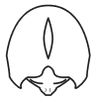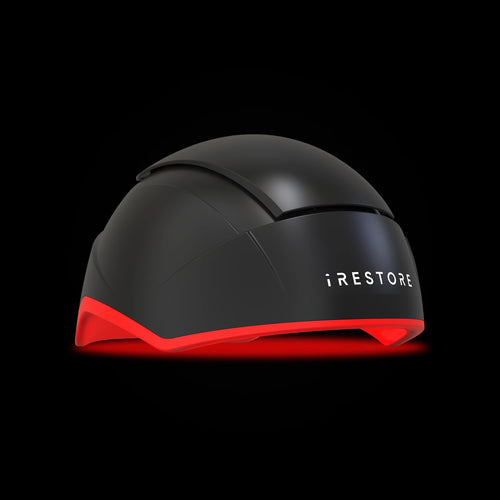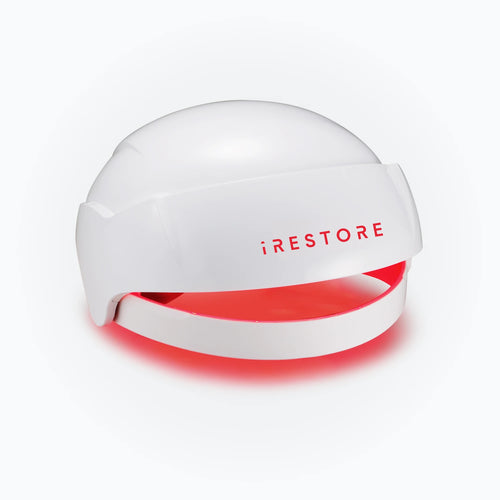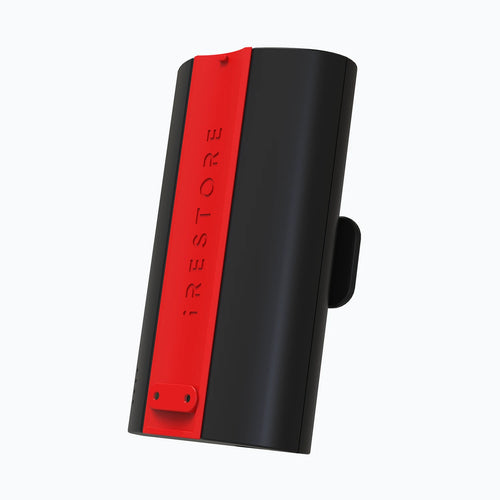Your hair is often one of the first things people notice, and when it appears dull, frizzy, or lifeless, it usually signals that something deeper is going on. Many people mistake simple dryness for actual hair damage, but the two are very different. Dry hair can often be improved with extra hydration, while damaged hair involves weakened cuticles, breakage, and long-term stress on the strands.
Recognizing the early signs of damage makes it easier to protect your hair and prevent the problem from becoming more severe. This article explains what damaged hair looks like, the main causes behind it, and the most effective ways to repair and restore its health
What Does Damaged Hair Look Like?
Damaged hair is more than just dryness. It occurs when the hair’s protective outer layer, the cuticle, becomes weakened or broken down. Once the cuticle is lifted or cracked, the inner structure of the hair is exposed and vulnerable. This type of structural damage leaves strands weaker, rougher, and far more likely to break.
Damaged Hair vs. Dry Hair
|
Aspect |
Dry Hair |
Damaged Hair |
|
Cause |
Lacks natural moisture due to environment, washing habits, or mild dehydration. |
Structural issues in the hair shaft and cuticle from heat, chemicals, or mechanical stress. |
|
Appearance |
Looks dull or flat but still feels intact. |
Looks frizzy, brittle, and uneven with split ends. |
|
Texture |
Rough or coarse to touch, but not fragile. |
Weak, brittle, and prone to snapping or breaking. |
|
Elasticity |
Maintains stretch, though feels stiff. |
Loses elasticity and snaps easily when stretched. |
|
Recovery |
Improves quickly with moisturizing conditioners or oils. |
Needs deeper repair with targeted treatments and consistent care. |
Visual Cues to Watch For
If you’re wondering whether your hair is damaged, here are the most common signs people notice right away:
-
A dull, lifeless appearance (no natural shine).
-
Frizz and flyaways that won’t smooth down.
-
Rough texture when you run your fingers through it.
-
Tangling and knotting more than usual.
-
Uneven, frayed, or split ends.
-
Hair that snaps instead of stretches when pulled gently.
By recognizing these visual cues early, you’ll be better equipped to prevent further harm and start repairing your strands before the damage worsens.
Key Signs of Damaged Hair
Not sure if your hair is truly damaged? Beyond looking dull or frizzy, damaged hair shows very specific signs that set it apart from normal dryness or temporary roughness. Here are the key indicators to look out for:
-
Split Ends & Breakage
The most obvious sign of damage is when the ends of your hair start splitting into two or more strands. Split ends make hair look uneven, frizzy, and unhealthy. Left untreated, they travel up the strand, causing more breakage over time. -
Dry, Brittle Texture
Healthy hair feels soft and smooth. Damaged hair, on the other hand, feels rough, coarse, or straw-like when you run your fingers through it. This brittle texture comes from lifted cuticles and a weakened hair shaft. -
Frizz & Flyaways
When the cuticle is damaged, it no longer lies flat, causing strands to stick out and resist styling. This creates constant frizz and flyaways that make hair appear messy even after brushing. -
Tangling & Knots
Damaged cuticles cause hair strands to catch on each other, leading to frequent tangles and knots. If your hair gets difficult to comb or detangle without breakage, it’s a red flag. -
Loss of Shine
Shiny hair is a sign of a healthy, smooth cuticle that reflects light. When hair is damaged, it loses its natural luster, appearing dull, flat, and lifeless no matter how often you wash it. -
Reduced Elasticity
One of the clearest signs of structural damage is elasticity loss. Healthy strands stretch slightly when pulled and bounce back without breaking. Damaged hair stretches a little but then snaps easily, signaling weakened structure. -
Overall Thinning Appearance
Long-term damage can make hair look thinner overall, with less body and volume. This happens when breakage and weak strands accumulate over time.
Common Causes of Hair Damage
Hair does not become damaged overnight. It is most often the result of repeated stress on the strands. By understanding the root causes, you can take steps to repair existing damage while also preventing it from happening again.
-
Heat Styling Tools
Flat irons, curling wands, and blow dryers expose hair to high temperatures that weaken the protective cuticle. Over time, this leads to dryness, breakage, and split ends. -
Chemical Treatments
Bleaching, coloring, perming, or relaxing your hair all involve harsh chemicals that strip away natural proteins and moisture. This makes the hair shaft weaker and more prone to long-term damage. -
Environmental Stressors
UV rays from the sun, pollution, and humidity can all break down the hair’s natural barrier. Prolonged exposure leaves hair rough, dry, and more likely to frizz. -
Mechanical Stress
Everyday habits like tight ponytails, braids, or even rough brushing and towel-drying can cause mechanical wear and tear. This often leads to split ends and breakage. -
Poor Hair Care Habits
Skipping conditioner, over-washing, or using the wrong products for your hair type can strip away natural oils and leave strands vulnerable. -
Lifestyle & Internal Factors
Diet, stress, hormonal changes, and dehydration all impact hair health from within. When your body lacks essential nutrients or hydration, your hair becomes weaker and less resilient.
Once you identify the causes, you can adjust your routine and begin repairing the damage with consistent care.
Repairing Damaged Hair with iRESTORE Tools
While you can’t undo damage instantly, the right treatments and tools can help strengthen your strands, restore shine, and promote healthier growth over time. iRESTORE offers science-backed solutions designed to target the root causes of weak, brittle hair.
1. Low-Level Light Therapy (LLLT)
iRESTORE’s FDA-cleared devices use low-level light therapy to penetrate the scalp and stimulate hair follicles. By improving blood flow and nutrient delivery, LLLT strengthens weakened follicles and encourages thicker, healthier regrowth. This makes it a long-term solution for hair that appears thin or fragile from damage.
2. iRESTORE Hair Care Products
-
Shampoos & Conditioners: Formulated to gently cleanse while replenishing lost moisture and nutrients. They smooth the cuticle to reduce frizz and restore softness.
-
Serums & Supplements: Designed to nourish hair from the inside out, providing essential vitamins, antioxidants, and hydration for stronger strands.
Together, these products do more than mask damage. They actively repair and protect hair at the cellular level.
3. Building Consistency Into Your Routine
Repairing damaged hair is not about quick fixes, it is about consistency. By pairing iRESTORE tools with smarter habits such as limiting heat styling, protecting hair from UV exposure, and maintaining a nutrient-rich diet, you create the ideal environment for hair to recover and thrive. With iRESTORE’s tools and supportive care, damaged hair can gradually regain its strength, resilience, and shine.
The Role of Support and Community
Caring for damaged or thinning hair is not only a physical journey but also an emotional one. Many people experience frustration, loss of confidence, or even anxiety when their hair no longer looks or feels the same. Having a supportive community can make this process easier. Sharing personal stories, tips, and progress updates helps reduce feelings of isolation and encourages consistency in care.
Brands like iRESTORE, loved by more than 50K customers worldwide, have built communities where users find encouragement and inspiration from others on the same path. Knowing you are not alone turns recovery into a shared experience that feels both motivating and achievable.
Your Path to Stronger, Healthier Hair
Damaged hair is easy to recognize once you know the signs, such as split ends, brittleness, dullness, and thinning. While everyday stressors like heat styling, chemical treatments, and environmental exposure are common causes, the good news is that damage does not have to be permanent. With the right care and tools, you can restore strength, shine, and resilience to your hair.
iRESTORE makes this journey easier through its combination of low-level light therapy devices and targeted hair care products. By supporting both the scalp and the strands, iRESTORE not only repairs existing damage but also creates the foundation for healthier, fuller hair in the future.
The key is consistency. Recognize the signs, take action early, and commit to a routine that nourishes and protects your hair. Healthy, confident hair is always worth the investment. Confidence Restored.
FAQs
-
What does damaged hair look like?
Damaged hair often appears dull, frizzy, and brittle. You may notice split ends, rough texture, tangling, breakage, loss of shine, or thinning over time. Unlike dry hair, damage affects the hair’s structure, making it weaker and more fragile. -
How can I tell the difference between dry hair and damaged hair?
Dry hair is usually caused by lack of moisture and feels rough but intact. Damaged hair, on the other hand, has lifted cuticles and structural weakness. It looks frizzy, breaks easily, and may have split ends. While dryness improves with hydration, damaged hair requires deeper repair. -
What are the main causes of hair damage?
Hair damage can come from heat styling tools, chemical treatments like coloring or bleaching, environmental stressors such as sun and pollution, mechanical stress from tight hairstyles or rough brushing, poor hair care habits, and lifestyle factors like diet, stress, and dehydration. -
Can damaged hair be repaired?
While you cannot reverse damage instantly, you can repair and strengthen hair over time. Consistent care with nourishing products, limiting heat and chemical exposure, and using restorative treatments can restore shine, smoothness, and resilience. -
How does iRESTORE help with damaged hair?
iRESTORE offers FDA-cleared low-level light therapy (LLLT) devices that stimulate hair follicles, improve blood flow, and promote healthier growth. Alongside hair care products like shampoos, conditioners, serums, and supplements, iRESTORE works to repair and protect hair at the root level.



















